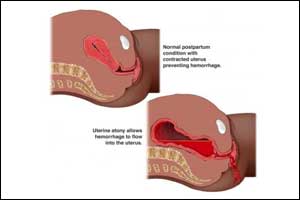- Home
- Editorial
- News
- Practice Guidelines
- Anesthesiology Guidelines
- Cancer Guidelines
- Cardiac Sciences Guidelines
- Critical Care Guidelines
- Dentistry Guidelines
- Dermatology Guidelines
- Diabetes and Endo Guidelines
- Diagnostics Guidelines
- ENT Guidelines
- Featured Practice Guidelines
- Gastroenterology Guidelines
- Geriatrics Guidelines
- Medicine Guidelines
- Nephrology Guidelines
- Neurosciences Guidelines
- Obs and Gynae Guidelines
- Ophthalmology Guidelines
- Orthopaedics Guidelines
- Paediatrics Guidelines
- Psychiatry Guidelines
- Pulmonology Guidelines
- Radiology Guidelines
- Surgery Guidelines
- Urology Guidelines
Uterine balloon tamponade highly effective in preventing maternal death from PPH

According to the World Health Organization more than 800 women around the world die every day from preventable causes related to pregnancy and childbirth. The leading reason is postpartum hemorrhage (PPH), which accounts for 27 percent of maternal mortality and occurs to some degree in five to seven percent of all deliveries.
Researchers in new studies have found that uterine balloon tamponade has a high success rate for treating severe PPH and appears to be safe.
Advanced interventions to stop the bleeding before the problem becomes unmanageable include emergency hysterectomy, a particular suturing technique, and ligation or embolization of the uterine artery -- but because these require extensive training and/or high-tech equipment, not all hospitals around the world have access to them. A simple, inexpensive alternative, the uterine balloon tamponade (UBT), has been available since the early 1980s. In it, a balloon is inserted through the cervix by catheter and inflated with water, filling the uterine cavity and arresting the hemorrhage.
Two studies -- published in 2013 and 2019 -- brought into question the effectiveness of UBT, but a paper published today in the American Journal of Obstetrics and Gynecology "really puts a nail in that coffin," according to principal investigator Thomas Burke, MD, FACEP, FRSM, director of the Global Health Innovation Lab in the Emergency Department at Massachusetts General Hospital and an associate professor at Harvard Medical School and the Harvard T.H. Chan School of Public Health.
"The reason we undertook this study is that those two trials caused a great deal of confusion and controversy regarding UBT," Burke said. "We decided to take an extremely rigorous approach, bringing together all of the world's literature on this technique and inviting independent investigators to join. It was a massive project." Burke and his colleagues conducted a systematic review and meta-analysis of 91 randomized control trials, nonrandomized studies, and case series, and found an overall success rate of 85.9 percent for UBT.
"So what this really teaches us is that the challenges experienced in these two trials were about the program implementation, not the device itself," he said. "There's no question the device works fine. But saving a life is much more complex than just handing someone a device that's new to their practice. We need to study how to integrate the device into a health system so that good uptake, appropriate use, and best practice result in quality care."
Burke pointed out that it is "exquisitely clear" that in many areas of the world, maternal mortality drops significantly when UBT is used. "They have saved many lives," he said. "But there are still places where one in six women lose their lives from pregnancy-related causes and in 2020 that should never be. It's an embarrassment to humankind."
For more details click on the link: http://dx.

Disclaimer: This site is primarily intended for healthcare professionals. Any content/information on this website does not replace the advice of medical and/or health professionals and should not be construed as medical/diagnostic advice/endorsement or prescription. Use of this site is subject to our terms of use, privacy policy, advertisement policy. © 2020 Minerva Medical Treatment Pvt Ltd